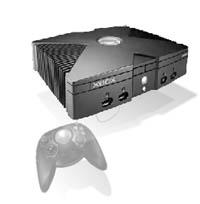The video game industry, pioneer in interfaces
2011/06/01 Leturia Azkarate, Igor - Informatikaria eta ikertzailea Iturria: Elhuyar aldizkaria

Practically since the creation of computers (at least since they began to enter companies and houses), the keyboard was the main interface between these machines and people. Later, in the early 1990s, or when computers and their operating systems began to fill with graphics and windows, the mouse came to help the keyboard. And in the last 20 years we have used them to give orders to the computer. Manual gestures on touch screens or voice knowledge that can be used on computers or mobile devices are the only novelties of recent years that have not had so much dissemination either.
Revolution in video games
However, in the video game market the situation has changed a lot in recent years. In 2006, Nintendo almost always revolutionized the world with keyboard, buttons and joysticks, presenting its Wii console and its WiiMote controller. With this control in hand, thanks to its accelerometers, it is able to follow the movements that we make with our hands in 3D space and allows to act with greater realism in the games. And the success that Wiia has had is known, which Sony later wanted to repeat with PlayStation Move (the same concept, but able to follow the position and distance in addition to the movement).
The third consoles war agent, Microsoft, pulled out the peripheral Kinect for its XBox in November last year. This is not a handheld, but a kind of webcam that is placed next to the TV. It has an infrared laser transmitter and a sensor that allows you to know the distance to which everything is in your visual field, as well as know the shapes (hands, head, legs...). Thus, the player uses the console without having any device in his hand or anywhere else: he plays real stirrups in the game of football, moves his head to one side to avoid punches in boxing, throws the disc with real movements of arms... It is a totally realistic feeling. And the success of Kinect has also been huge. Guinness record of the best-selling electronic device: 1 million in 10 days, 8 million in 60 days and 10 million in 4 months.
Jump to computers?
Shortly after taking out the WiiMote they managed to hack it and started it by playing the role of the mouse on a computer. But the mouse is more comfortable and, of course, that use has not spread. But a few hours after Kinect's departure, he was also hacked by reverse engineering (performed by Cantabrian Hector Martin) and released free drivers under the name libfreenect. And with this yes, the free software community made really interesting applications.
Some examples of these are position detectors (including proximity or remoteness), presence detectors, 3D hand motion systems in the air, monitoring the behaviors of children in a class through Kinect and detecting disorders of inattention or obsessive-compulsive identity, systems of help to the blind (by detecting obstacles and finding distance to the Internet that we are truly using in Science and Technologies).
I think of other possible applications: for example, knowing the user and controlling the mouse through eye movements, systems to log in logeo without needing more. Kinecta herself may not be prepared to accurately detect face and eye shapes, but a more powerful device that would crush the same concept could do so in the future.
Although the applications are very interesting, it must be seen if the Kinect really makes the leap to computers and the applications that use it become everyday applications. This is the biggest change in computer access interfaces in recent decades. This is not an impossible occurrence: it cannot be forgotten that behind it is Microsoft, whose Windows operating system is used by more than 90% of the world's computers.
Microsoft has a great interest and need to incorporate some revolutionary innovation, since lately the public does not see this company as a symbol of innovation: the innovations have come from the hand of Apple and Google on mobile devices and the Internet, and in computers have also been more innovative Linux and Apple. Microsoft has always followed with Windows and Office and also failed with Vista. He has regained his leadership in the world of consoles, through Kinect, and there are indications that he wants to take it to computers: he announced that in the spring of this year he would release a SDK for Kinecte ( Software Development Kit or Kit for Software Development), so that whoever wishes can make programs that use Kinect, and the next version of Windows drivers, Windows 8, seems to come with. If so, in a short time we will see big changes in the way we work with computers. And lovers of free software will not have to wait until we have drivers in our operating systems: as opposed to what normally happens, this time we have had the drivers handy before.

Gai honi buruzko eduki gehiago
Elhuyarrek garatutako teknologia






